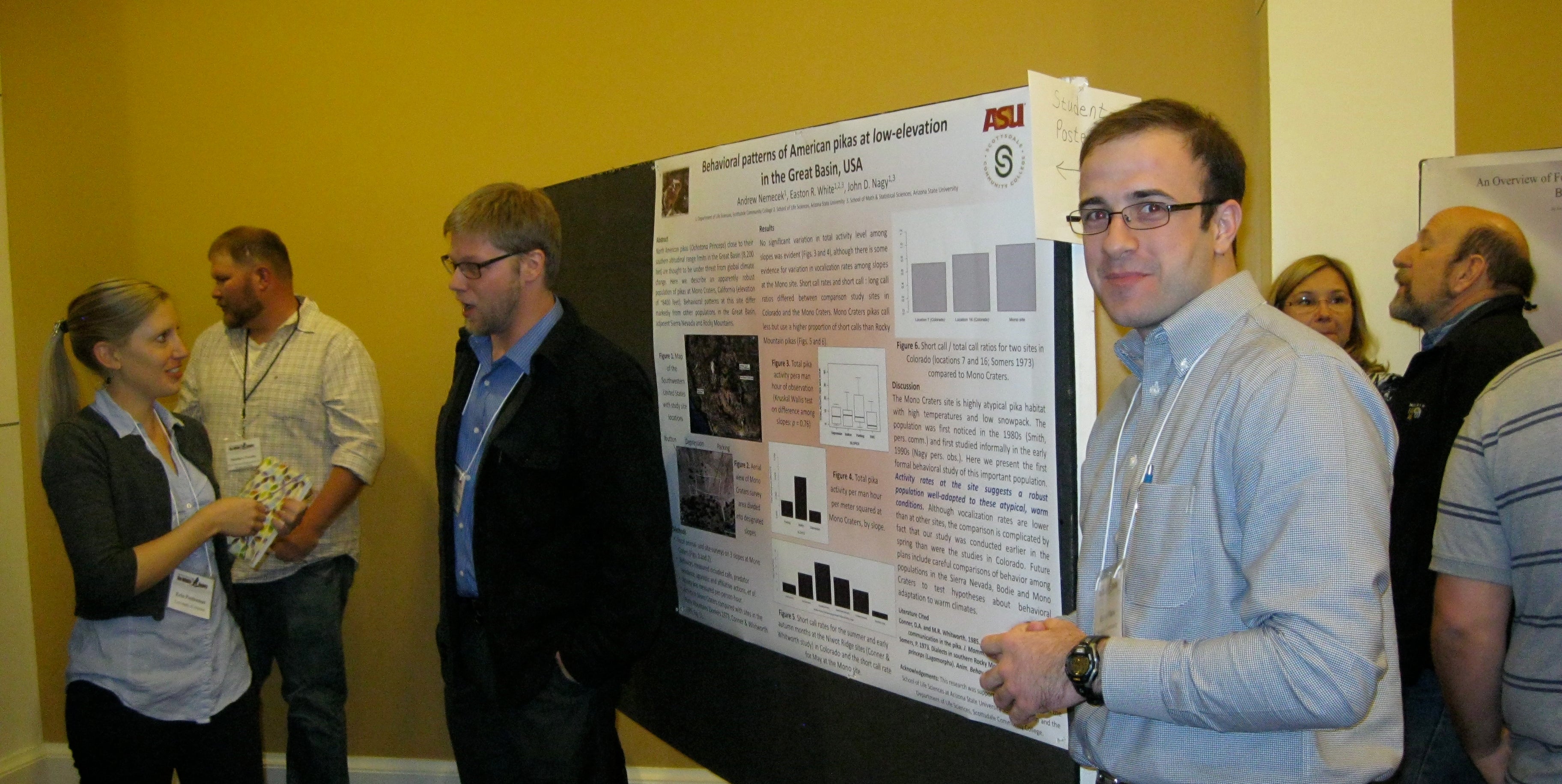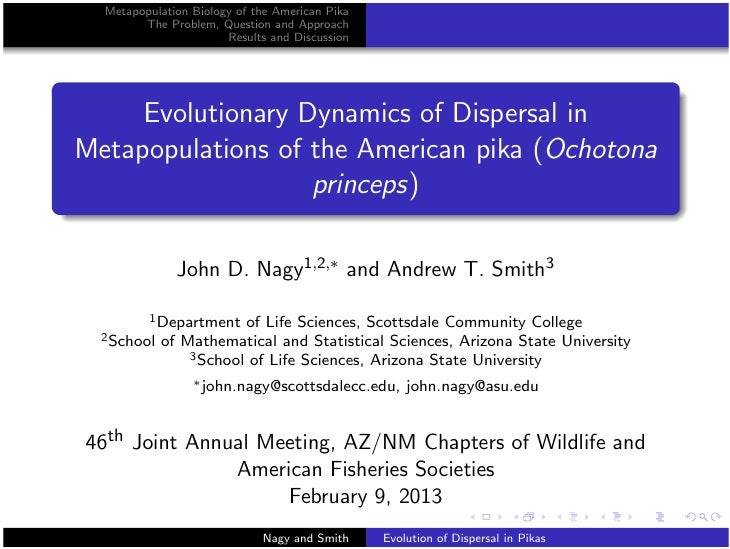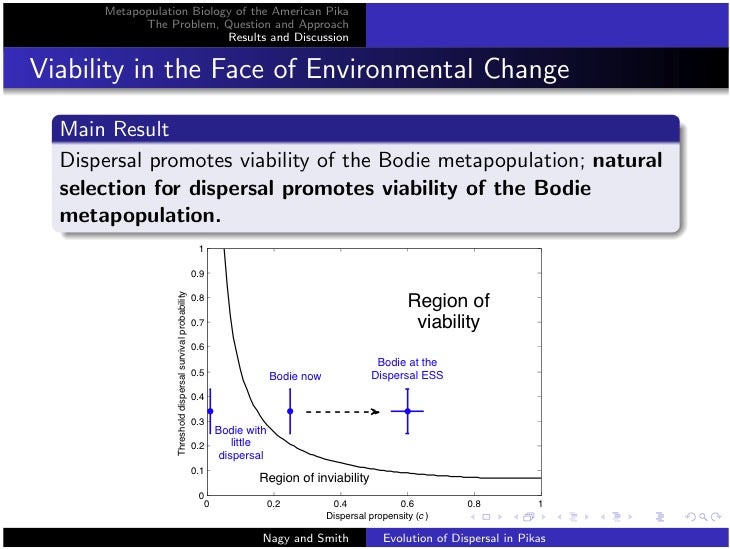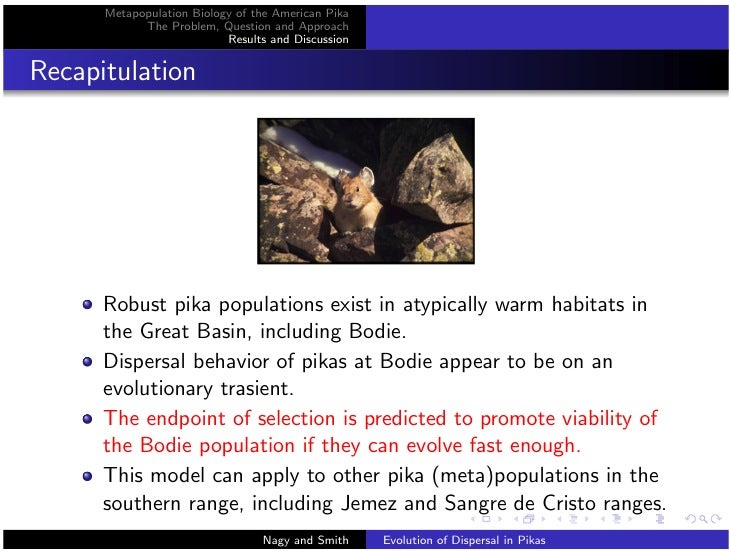AZ/NM Wildlife Society Annual Meeting, 2013
We presented results of our pika field work and modeling at the Joint Annual Meeting of the Arizona and New Mexico chapters of the Wildlife and American Fisheries Societies in Albuquerque in February, 2013. The pika team was represented by Easton White and Andrew Nemecek, who presented a poster summarizing our pilot behavioral study of pikas at Mono Craters in the summer of 2012. The poster, entitled "Behavioral Patterns of American Pikas at Low Elevation in the Great Basin, USA," was well received and generated good discussions, as illustrated below.

Our 2012 field operations were a pilot project to test the feasibility of a behavioral assay, and this poster showed that the protocol had some flaws, but in large part was sufficient for our main efforts in summer 2013. We also performed a preliminary comparison between behavior of the Mono pikas with those in Colorado.
I also presented a paper coauthored with long-time friend and collaborator, Andrew Smith (title slide below).

This paper extends modeling work published in my dissertation. This study focused on the evolution of dispersal in pika metapopulations—populations composed of a set of subpopulations connected by dispersal—like the one at Bodie State Historic Park that Andrew and his students (including me) have been studying since the 1970s.
It has long been known that dispersal does not evolve to stabilize a population. Rather, like the vast majority of life history traits, it evolves to maximize individual fitness in a given environment. Necessary conditions for evolution of a non-zero dispersal rate include some sort of variation in population density or relatedness in either time or space (or both, of course). Without such variation, dispersers have no better place to go, so it's better to stay put even if their likelihood of acquiring resources, which for pikas amounts to securing a territory, in their natal patch is extremely low. But it usually demands a cost—leaving the natal patch for unfamiliar territory exposes a disperser to predators, weather and, especially for pikas, social abuse by unrelated individuals. Indeed, this scenario is typically invoked to explain a widely-observed phenomenon in American pikas—adults almost never disperse, and even juvenile dispersal appears to be relatively rare. (I should note that this last conclusion is disputed somewhat by a genetic analysis performed by Mary Peacock in the 1990s.)
To generate the required density variation, most models of dispersal evolution assume some sort of density-independent catastrophe process. For pikas, such catastrophes are not immediately evident, although speculation supplies a number of reasonable hypotheses—for example, particularly bad winters, dry summers or efficient predators could generate such catastrophes, although these have not been directly observed in the field. However, in metapopulations there is another source of "catastrophe"—demographic stochasticity, which refers to random fluctuations in population density due to unpredictable variations in births and deaths. In small populations, like the subpopulations in the Bodie pika metapoulation, such random events cause patch extinction relatively frequently. Could this produce the required variation to generate nontrivial dispersal in pikas?
My model suggests that the answer to this question is a resounding "yes," with the caveat that the patch sizes must be small—no more than about 15 animals. Pika metapopulations with larger patches are not expected to evolve significant dispersal rates. Applied to Bodie, where patches are in the "small" range, the model suggests that dispersal should evolve to a rate somewhere around 0.6; i.e., the evolutionarily unbeatable endpoint—called a continuously stable strategy in the technical lingo--is to have about 60% of your offspring disperse from your patch to another.

This result leads to an interesting corollary, as shown above. Our best guess dispersal rate for the Bodie pikas, which comes from one of Andrew Smith's Ecology papers in 1974, is about 1/4. If the model is correct, then, the Bodie population has not yet reached its evolutionary endpoint. The traverse from the current dispersal rate to the evolutionary endopoint is expected to move the Bodie population away from the extinction threshold (see above). Therefore, selection for dispersal is expected to stabilize the Bodie metapopulation, according to the model.
